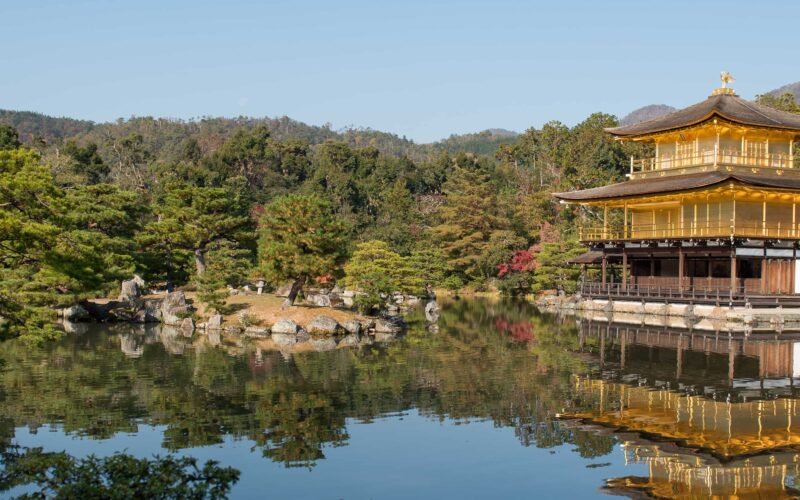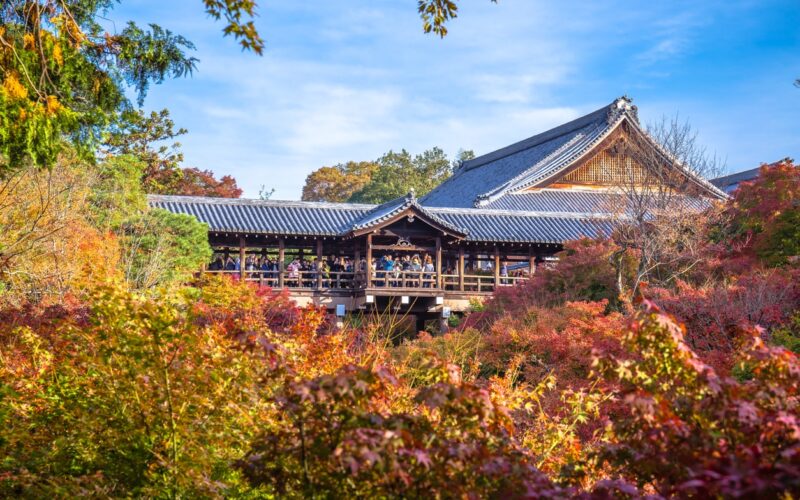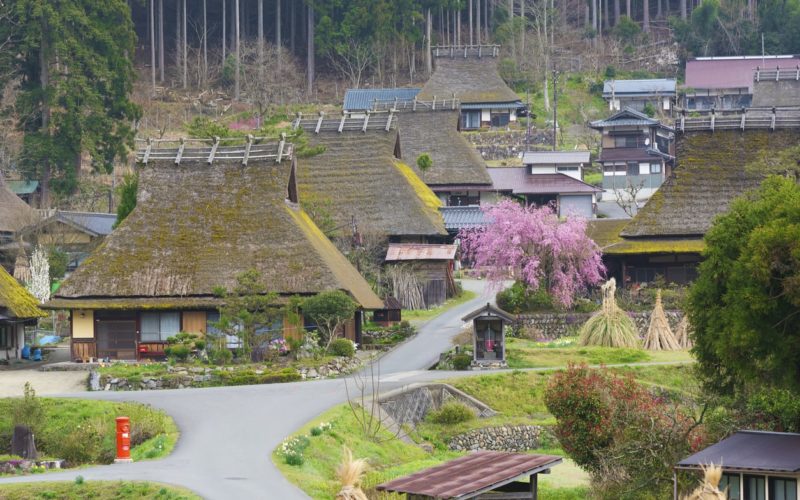Iwashimizu Hachimangu Shrine
Take a cable car to see where God of War meets Thomas Edison.
You’ve just stumbled upon a shrine known for everything that makes Kyoto a must-see — and you won’t have to battle hordes of people to see it. At Iwashimizu Hachimangu Shrine, located in Yawata just outside Kyoto city, you’ll also discover it has a surprising connection to the invention of the light bulb. A literal house of God, this picturesque shrine overlooks Kyoto as it rests atop Mount Otokoyama and has been deemed a “national treasure.”
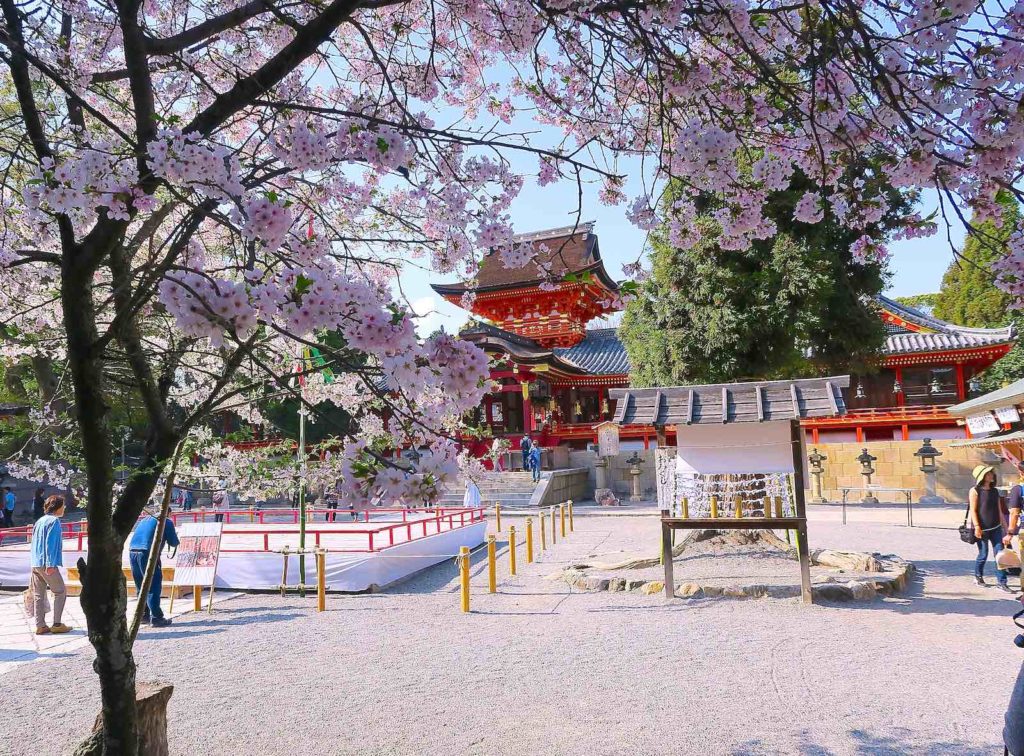
Photo by: Lucio Maurizi Visit in the spring for cherry blossoms!
A brief history
Until 1868, Iwashimizu Hachimangu was a shrine-temple complex dedicated to both Buddhist and Shinto practices. This is also represented through its architecture with Iwashimizu Hachimangu being one of the only four remaining examples of Hachiman Zukuri. This architectural style uses space, structures and roofs to create buildings that appear to be separated at first glance, but which actually share a single interior.
What sweet is a must-try in Kyoto?
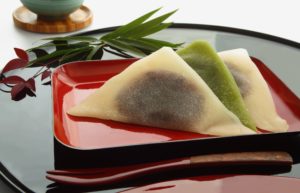
The scenery
In order to reach the summit to get to the shrine, you can either hike or ride the Otokoyama Cable Car. During the short cable car ride, you’ll glide above beautiful cherry blossom trees blooming in spring, as well as momiji (Japanese maple trees). In fact, one of the best times to visit is when the area is cloaked in fall colors in mid-November and early December.
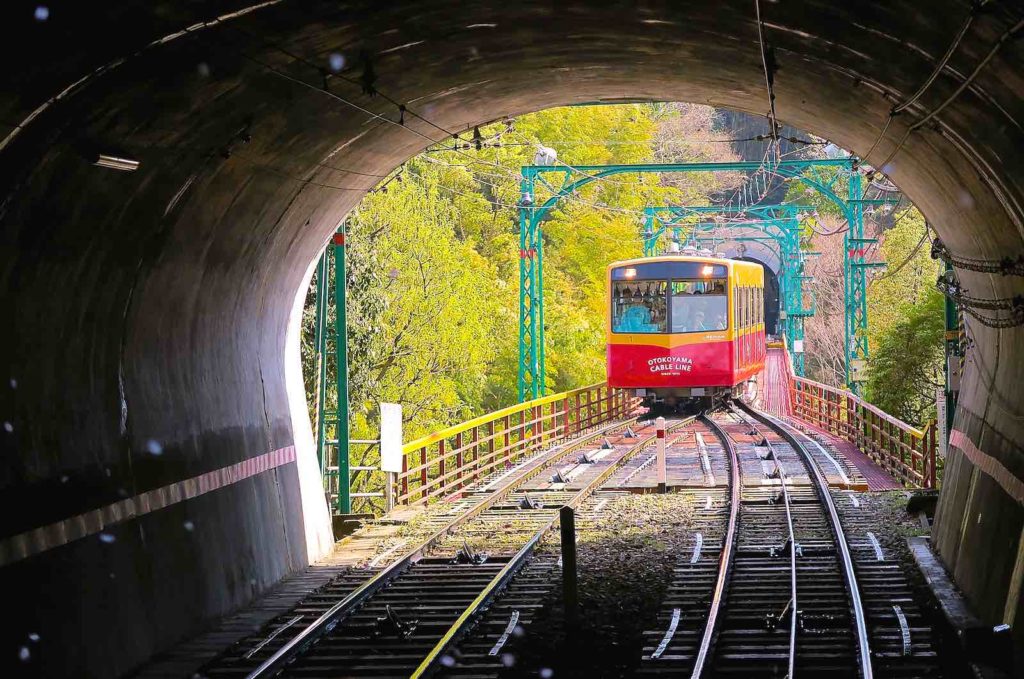
Photo by: Lucio Maurizi The cable car runs to and from the shrine.
Once you arrive, take in the awesome panoramic views of Kyoto and then walk a few minutes to the actual peak of the mountain where the shrine complex stands, passing smaller shrines along the way.
At the end of the beautiful Lantern Path, you will find the main shrine of the complex, where the tour starts.
Entering through the South Gate, you’ll come to the Main Sanctuary, a giant hall with detailed carvings on the wooden beams decorating the structures. Near the East Gate, there’s Ise Youhaisyo, a place to worship the sacred Ise Jingu from afar. Take a short pathway from there to the Iwashimizui, which is a sacred well. Suffice to say, the shrine complex is full of nooks and crannies to explore, making it an adventurous experience.
Thomas Edison Monument
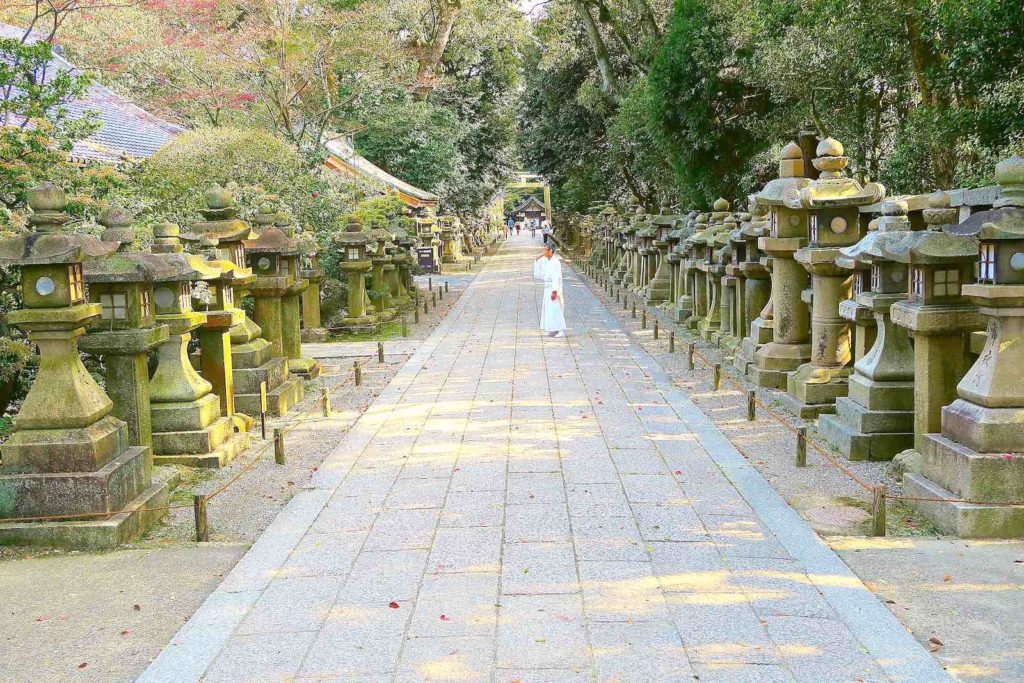
Photo by: Lucio Maurizi The Lantern Path.
What many don’t know about Iwashimizu Hachimangu, is it has also brought a significant contribution to the world of science. That’s why — surprisingly — you can find a Thomas Alva Edison Monument here. The American inventor used bamboo from the shrine area to create filaments for his first light bulb. To this day the shrine holds two festivals in Edison’s honor. He is celebrated every year on the date of his birth and of his death. You can join the festival of lights on May 4 to admire thousands of bamboo lanterns.
The shrine’s biggest festival, the Iwashimizu Festival, is held by imperial ordinance and is meant to ward off evil. Between rituals and dances starting in the afternoon of Sept. 15, monks release fish into the shrine’s pond and into the nearby Hojo river.
Trivia

Topics: December, kyoto, September, shrines and temples, Spiritual, spring
